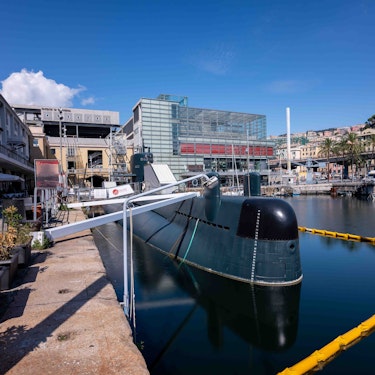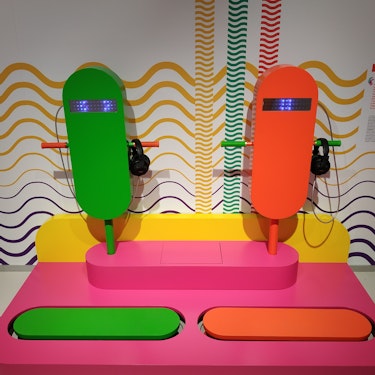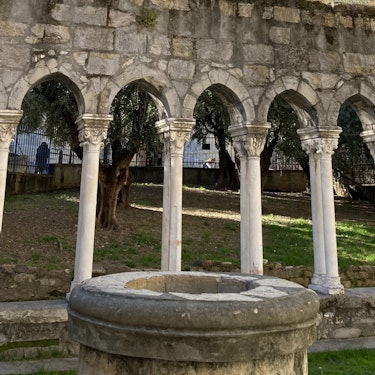More about: 10 Things to Do in Genoa
If you plan to visit Genoa, you will find one of the most beautiful destinations in Italy and also one of the most important centres of international maritime trade since time immemorial. Located on the shores of the Ligurian Sea, this city offers culture, art, unforgettable landscapes and some of the most outstanding museums in northern Italy. Here's everything you need to know to enjoy your trip to Italian Liguria.
1. Marvel at the Genoa Aquarium

If you love marine life or are planning to visit this destination with children, one of the best places to discover is the Genoa Aquarium, which is also one of the largest in Europe. Opened in 1992 for the city's Expo, the aquarium is located in the Old Port and is home to 12,000 animals of 600 different species. From sharks and dolphins to penguins and tropical fish, you will find an immersive experience in its tanks.
The tour of the aquarium, which includes the recreation of more than 70 ecosystems, offers interactive exhibits that allow you to get up close and personal with the animals. One of the most popular attractions is the dolphin tank, but you can also walk through the shark tunnel, which offers an unparalleled panoramic view. I encourage you to buy tickets for the Genoa Aquarium online so you don't have to waste time at the ticket office.
You can also feed some of the species that live there and learn about the importance of ocean conservation. This combination of natural beauty and education is what has established the Genoa Aquarium as one of the city's main tourist attractions, attracting thousands of people every year.
More information
- Price: from £27
- Location: Ponte Spinola, 16128 Genoa GE, Italy
2. Take a boat trip around the Port of Genoa
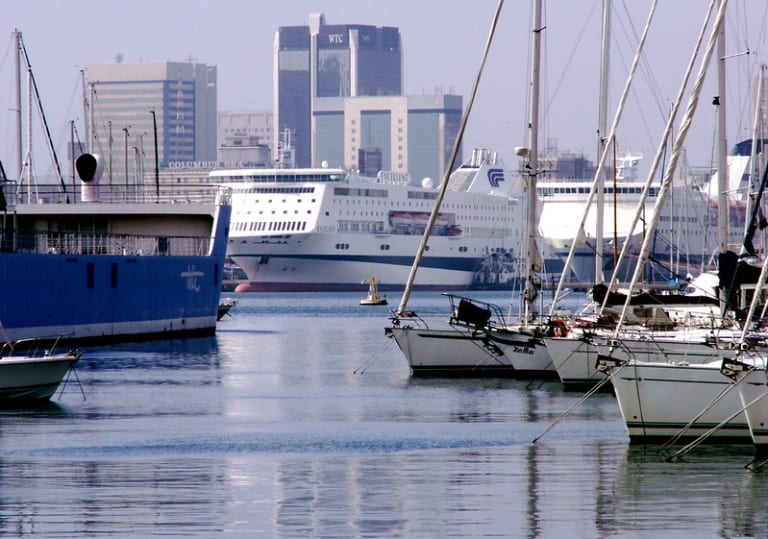
The Port of Genoa is one of the largest and oldest in the Mediterranean and has been a key point for European maritime trade since the Middle Ages, so taking a stroll around this site will allow you to discover the historical epicentre of this destination. From the deck of the boats, you can also enjoy incredible views of the urban landscape and the Ligurian Sea surrounding the port of Genoa.
When you book a boat trip around the port of Genoa, you will have the opportunity to see La Lanterna, the lighthouse I mentioned earlier, which has shaped the city for centuries and remains one of its most recognisable symbols, as well as the old port walls, cranes and industrial areas that are still in operation. This contrast between tradition and modernity in the infrastructure is one of the most interesting aspects of the tour.
However, what makes this activity so popular is the combination of history and nature it offers. Along the walk, you can enjoy the calm waters of the Mediterranean while learning about Genoa's maritime past and its historical evolution. It is also a good opportunity to take panoramic photographs with the Apennine Mountains as a backdrop.
- Duration: 1 hour 10 minutes
- Price: from £9
- Location: Porto Antico di Genova, 16128 Genoa GE, Italy
3. Discover the House of Christopher Columbus

Christopher Columbus' House will allow you to learn about the origins of the explorer who changed the course of world history. Although the current house is an 18th-century reconstruction, it is located on the site where the original Columbus family home is believed to have stood, near the Porta Soprana, one of the ancient medieval gates that is also one of the city's main historical attractions.
The house functions as a museum dedicated to the life and travels of Christopher Columbus. There you can explore exhibitions highlighting Columbus' childhood and youth in Genoa, as well as details of his famous expeditions to the New World under the patronage of the Catholic Monarchs of Spain. Through informative panels, documents and replicas, the museum offers an overview of medieval Genoa and the life and career of the explorer.
When you book tickets to the Christopher Columbus House museum, you will also find materials on the influence that Genoa, as a maritime power, had on the formation of the young conqueror.
More information
- Price: from £10
- Location: Via di Porta Soprana, 16121 Genoa GE, Italy
4. Discover Genoa Cathedral

Marking the city's kilometre zero, Genoa Cathedral is one of the most important and oldest religious buildings in Italy. Built in a fascinating mix of architectural styles, ranging from Romanesque to Gothic, the cathedral has witnessed Genoa's evolution and its black and white marble façade has become an unmistakable symbol of this destination.
Inside the cathedral, you can admire a collection of art and various historical elements. The frescoes, sculptures and side chapels decorated with marble stand out for their beauty and artistic value. One of the most important treasures found inside is the Sacro Catino, an ancient glass vessel which, according to legend, was used at the Last Supper.
Please note that, due to its strategic location in the city centre, you can visit this site on your own, by public transport or by including a stop in your planned itinerary if you decide to book the private tour of Genoa , an experience in which you can choose which sites to visit.
More information
- Price: from £48
- Location: Piazza San Lorenzo, 16123 Genoa GE, Italy
5. Visit the Galata Maritime Museum

If you want to visit one of the most important maritime museums in Europe, don't miss the Galata Maritime Museum in Genoa, which offers a comprehensive overview of the city's naval and maritime history. Housed in a historic building that was once an arsenal, this museum tells the story of Genoa as a maritime power and its relationship with the sea over the centuries.
Among the museum's historical objects, you will find model ships, navigation charts, nautical instruments and weapons that reflect the beginnings of naval history. One of the highlights is the full-scale replica of a 17th-century Genoese galley, where you can walk on the deck and experience first-hand what life was like on board these ships in ancient times.
When you buy tickets to the Galata Maritime Museum, you won't just see ancient objects, as it also addresses contemporary issues such as migration. The MEM exhibition offers an interactive experience in which you can embark on a symbolic journey, reliving the voyages that thousands of Italians made to America in search of a better life.
More information
- Price: from £37
- Location: Calata Ansaldo De Mari, 1, 16126 Genoa GE, Italy
6. Visit the Genoa Lighthouse
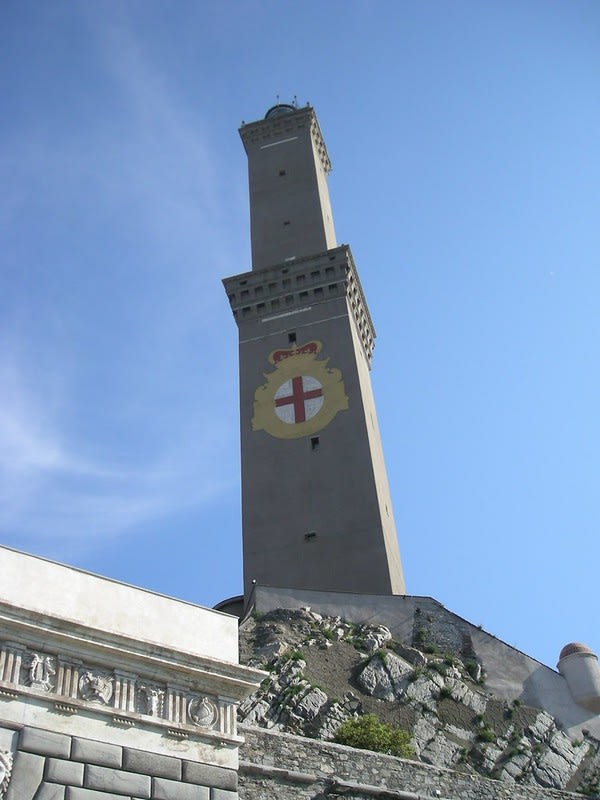
The Genoa Lighthouse, known locally as La Lanterna, is one of the oldest working lighthouses in the world and an iconic symbol of the city. At 76 metres high, it is the tallest lighthouse in the Mediterranean and the second tallest in the world, serving not only as a beacon for ships but also as an important observation and strategic defence post.
From the top of La Lanterna, you can enjoy a panoramic view of Genoa and its industrial port, one of the largest in Italy. In addition, the lighthouse is surrounded by a park where you can take a stroll while discovering its monumental structure, which is over nine centuries old.
When you book tickets for the Genoa lighthouse, you will also have access to a museum dedicated to the city's maritime and port history. This space, located on the first floor of the building, includes exhibitions on the evolution of navigation, the development of the port and the crucial role that La Lanterna has played over the years to become a reference point for the cultural heritage of this destination.
7. Stroll along Via Garibaldi
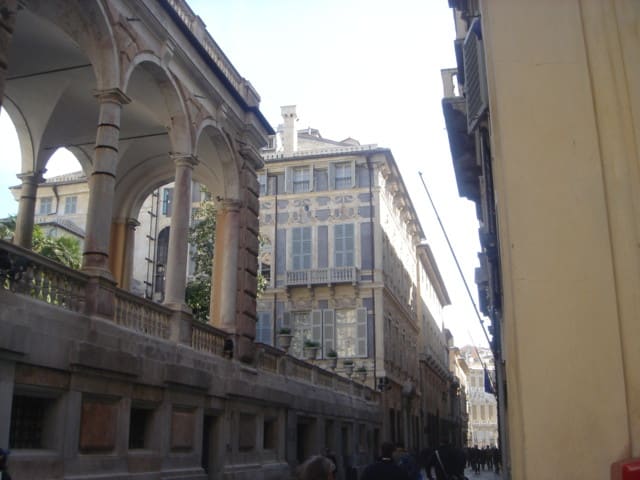
Via Garibaldi is one of Genoa's most iconic streets and is renowned for its architecture and history. This thoroughfare was built in the 16th century as an exclusive avenue for local aristocratic families, so when you stroll along it, you can immerse yourself in an open-air museum, surrounded by Renaissance and Baroque palaces that showcase the splendour of ancient Genoa.
One of the main attractions of Via Garibaldi is the Palazzi dei Rolli, a group of colourful palaces that were once the residences of the city's most influential families. Some of the most notable are the Palazzo Rosso, the Palazzo Bianco and the Palazzo Doria Tursi, which currently house art museums where you can admire works by Van Dyck, Veronese and Rubens, as well as collections of decorative art.
These palaces are not only notable for their collections, but also for their courtyards and interior gardens, which offer a peaceful respite from the hustle and bustle of the city and where you can find cafés and ice cream parlours, ideal for escaping the heat if you plan to visit this site in summer. You can also include this street in your itinerary if you decide to book a private tour of Genoa.
8. Walk through Boccadasse
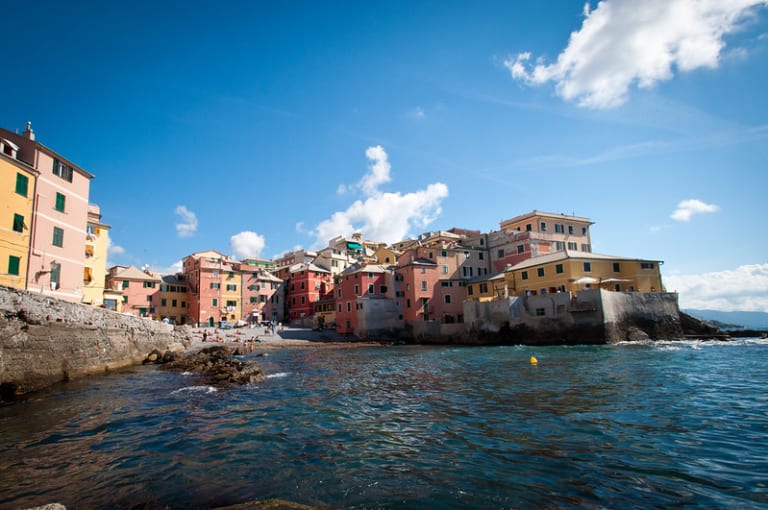
Boccadasse is a picturesque fishing neighbourhood on the coast of Genoa that offers visitors the perfect getaway. This small, colourful district, with its pastel-coloured houses clustered around a small bay, is notable for its narrow, cobbled streets where it is easy to surrender to the peaceful and relaxed atmosphere that characterises this corner of Genoa.
The name of the neighbourhood in English means "donkey's mouth" and comes from the peculiar shape of the surrounding bay, which resembles the mouth of this animal. From this district, you can enjoy panoramic views of the Ligurian Sea and find a small pebble beach, which is a meeting point for locals.
One of the highlights of Boccadasse is the viewpoint at the end of the promenade, where you can enjoy panoramic views of the coast. At sunset, this place becomes one of the most romantic in the city, with the warm colours of the sky reflecting on the waters of the Mediterranean. You can get there on foot or by booking the Genoa hop-on hop-off tourist bus.
In Boccadasse, don't miss the Chiesa di Sant'Antonio, a church overlooking the bay that adds a historical and cultural touch to the neighbourhood. Nearby, you can also explore Corso Italia, Genoa's most famous promenade, and the Albaro neighbourhood, known for its elegant villas and gardens.
9. Visit the Royal Palace of Genoa
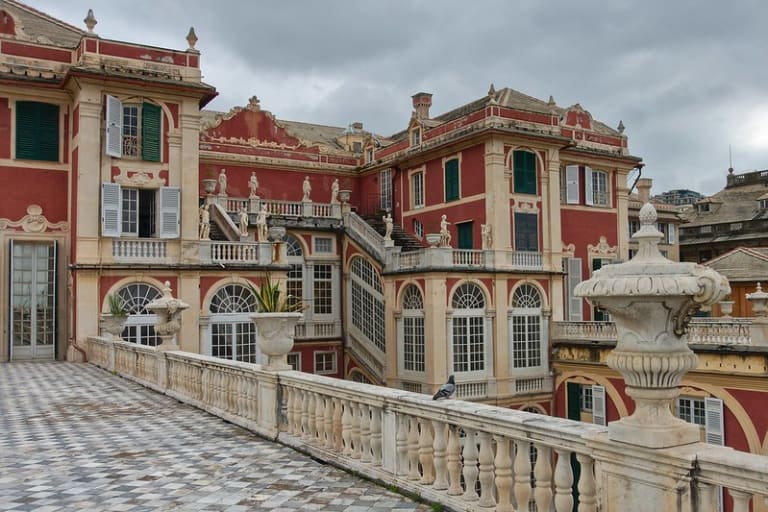
The Royal Palace of Genoa is one of the city's most famous monumental buildings. Built in the 17th century for the Balbi family, one of Italy's most influential dynasties, the palace passed into the hands of the Durazzo family before becoming the property of the Savoy, the Italian royal family, in the 19th century. Today, the palace is a state museum that preserves the splendour of its aristocratic past.
In this building, you can explore the rooms that belonged to the nobility, decorated with frescoes, gilded stucco and original furniture that reflect the luxury in which its former owners lived. Among the most notable exhibits are the Throne Room, used by royalty during official visits, and the Hall of Mirrors, inspired by the famous Hall of Mirrors at Versailles.
The Hall of Mirrors also offers a sweeping view of the palace gardens and the harbour. Throughout the visit, you can explore the building's art collections, which include works by Tintoretto and Luca Giordano.
Further information
- Duration: 1-2 hours (estimated)
- Price: Variable depending on season
- Location: Via Balbi, 10, 16126 Genoa GE, Italy
10. Tour the Porta Soprana monument
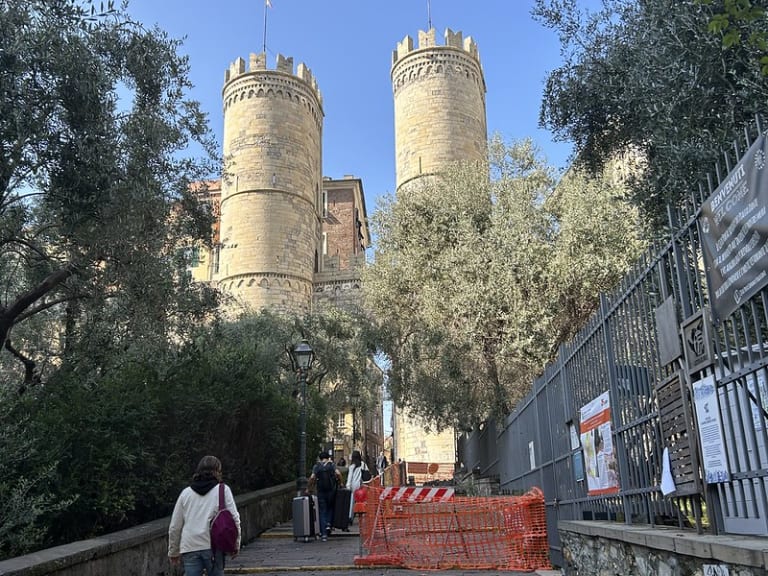
Porta Soprana is one of Genoa's most iconic monuments and one of the few medieval gates still standing from the city's ancient walls. Built as part of the local defence system, Porta Soprana marked the eastern entrance to the city with two twin towers flanking the central arch.
In a perspective view of the gate, you can see its robust structure and architectural design typical of the Romanesque style. The strategically located towers rise above the narrow medieval streets and offer a complete view of Genoa's historic centre. From the top, you can enjoy a panoramic view of the rooftops and domes of nearby churches, as well as the port and the Ligurian Sea.
Next to Porta Soprana is another site of great historical importance: the House of Christopher Columbus, believed to have been the home of the renowned explorer during his youth. It houses an exhibition that is well worth visiting in Genoa and has already been recommended in the list due to its historical significance.





